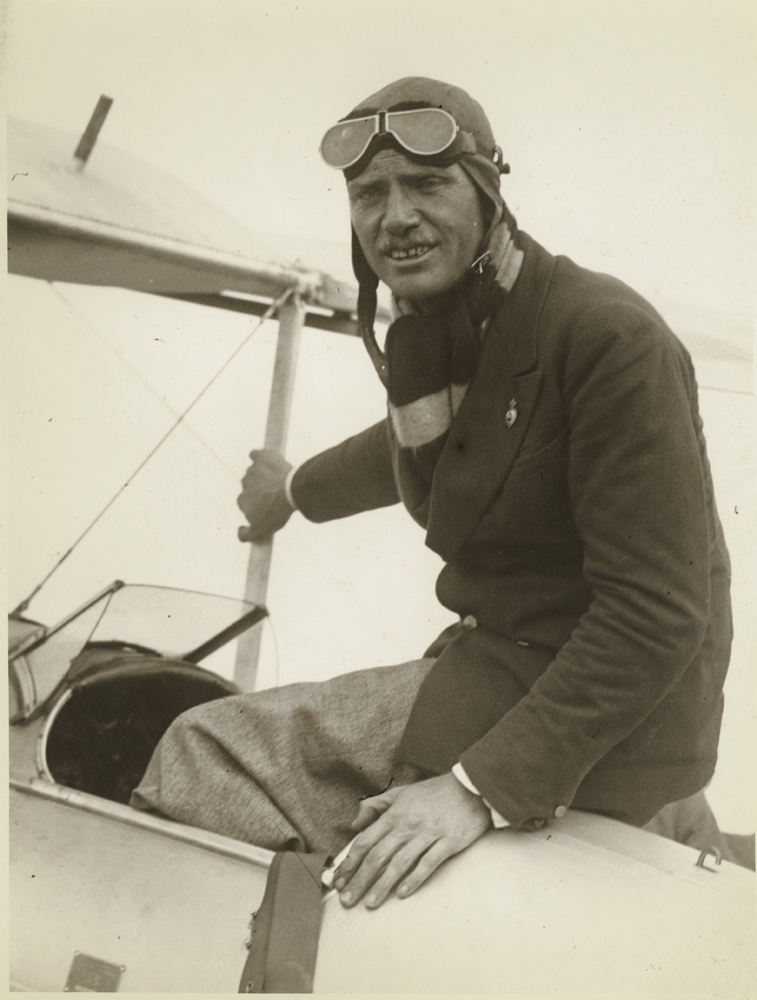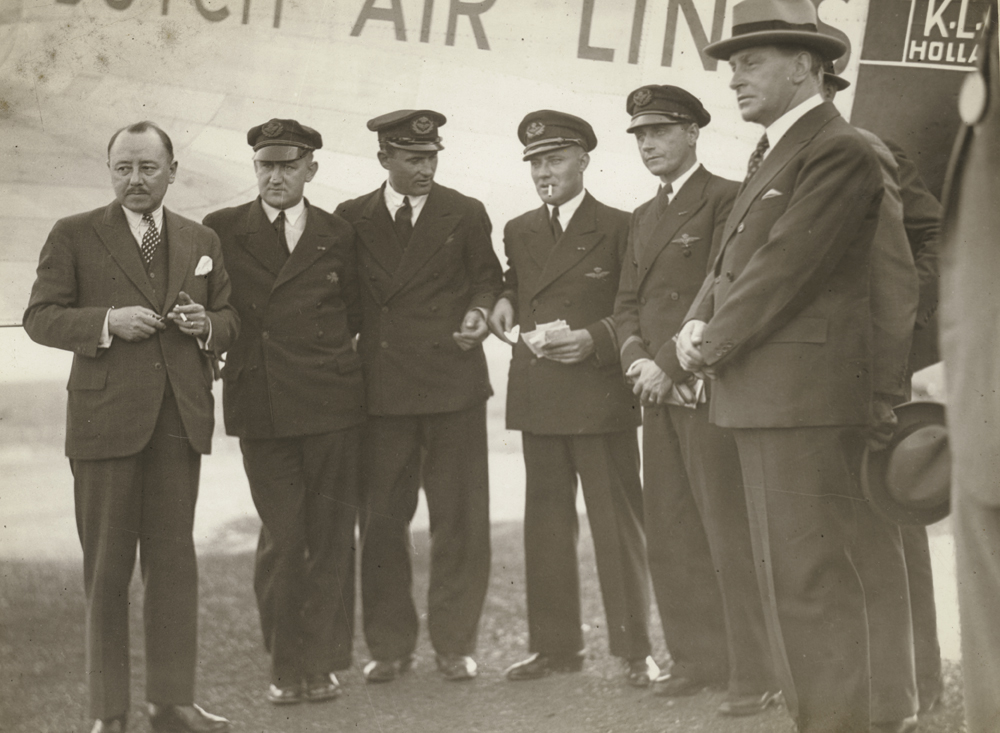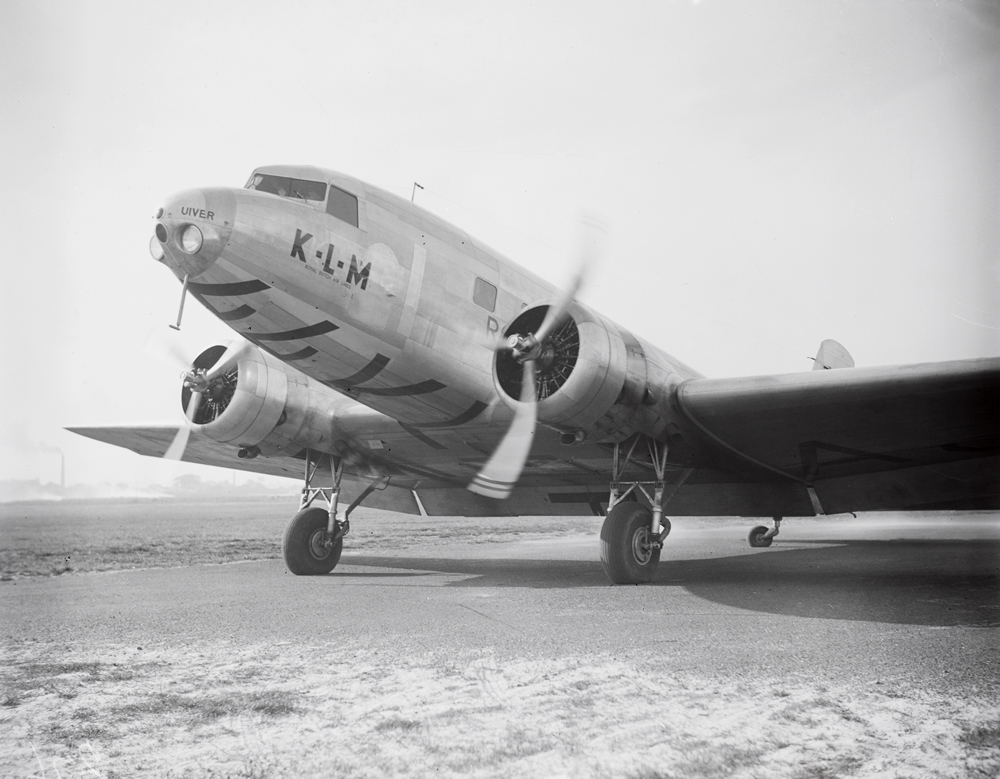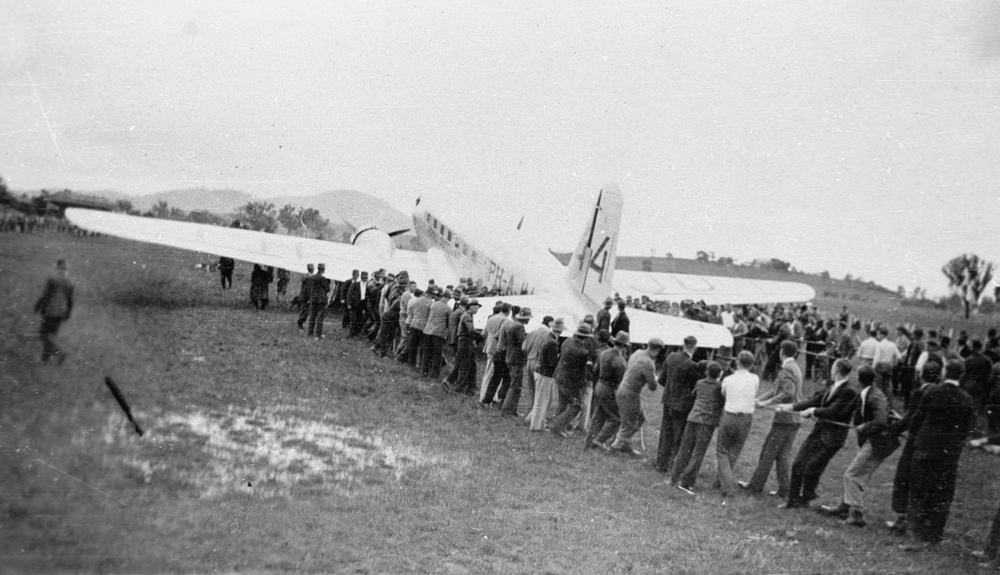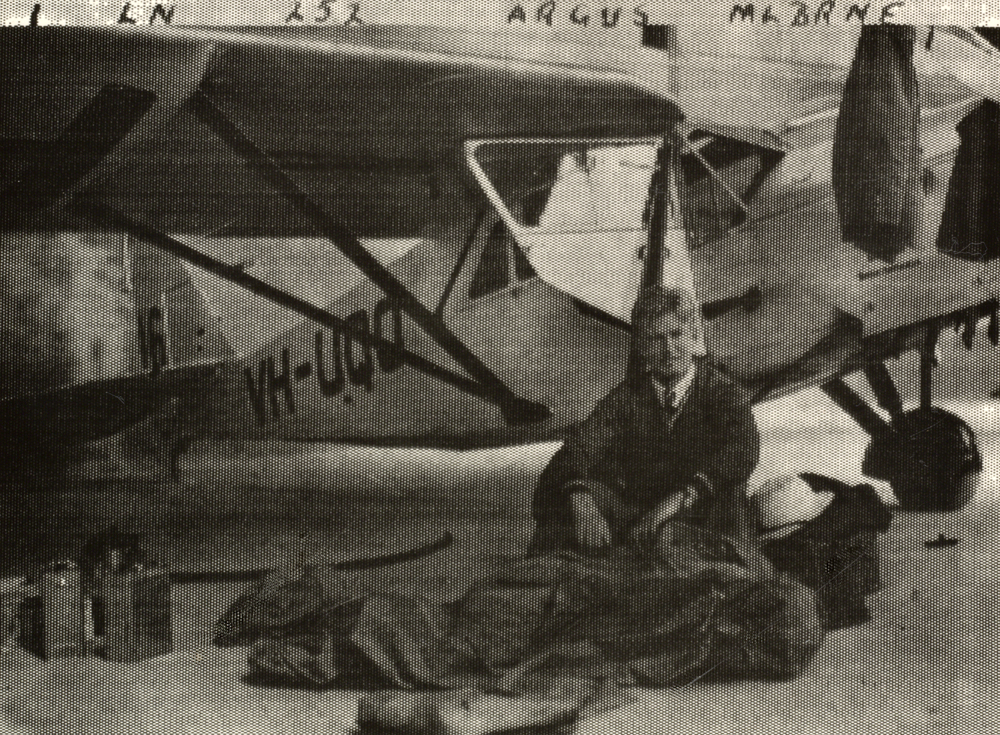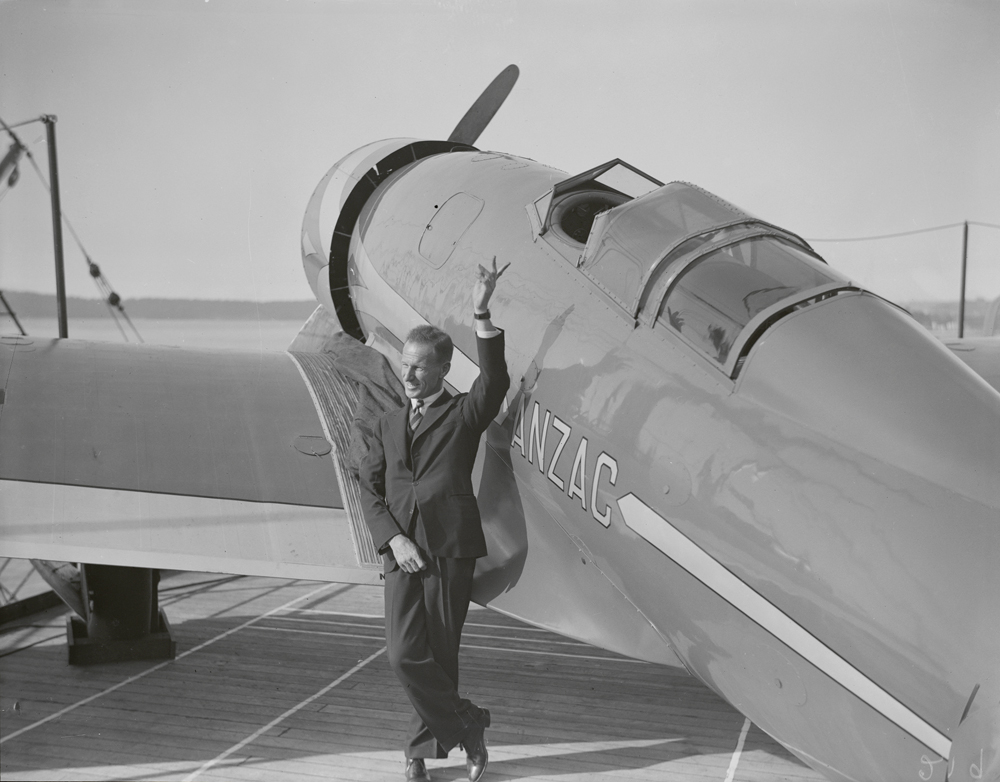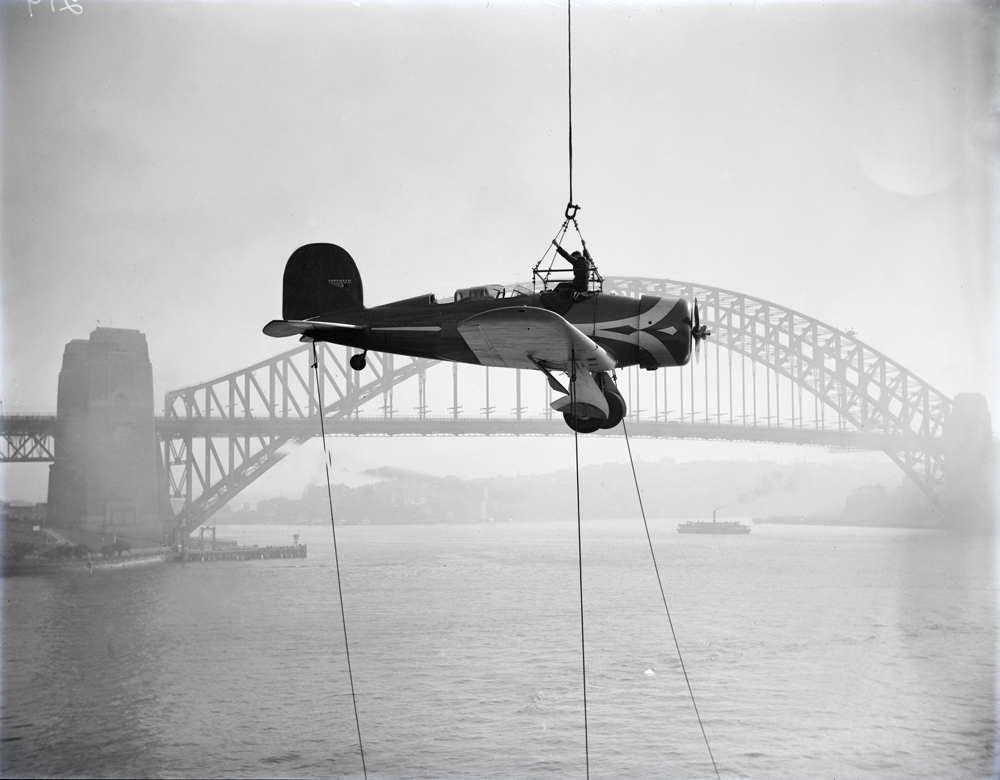MacRobertson Centenary Air Race
A spectacular flying race was held in 1934 to celebrate Melbourne's 100th anniversary.
The 1934 MacRobertson Centenary Air Race from Mildenhall (near London) to Melbourne was divided into two divisions – speed and handicap – with no limits to aircraft size, power or crew. The sponsor, Australian confectionary mogul, Sir Macpherson Robertson, provided a prize pool of £15, 000. Initially, there were 64 entrants from 13 countries, but when the race started on 20 October 1934, the field had been reduced to 20 planes from seven countries. Only 11 finished the gruelling 18,000 kilometre trip.
The route stretched over nineteen countries and seven seas. Five compulsory stops were designated for both divisions. Between the five stops (Baghdad, Allahabad, Singapore, Darwin and Charleville) pilots could select their own route.
Winners of the speed division of the race were British fliers C.W.A. Scott and T. Campbell Black in a red DeHavilland 88 Comet, named Grosvenor House. They reached Melbourne in two days, 23 hours, 18 seconds, with a total air time of 71 hours.
Winner of the handicap division, and second fastest with an air time of 81 hours 10 minutes, was the Dutch airliner Uiver (Stork). Crewed by Parmentier, Moll, Prins and Van Brugge and carrying three passengers, the Douglas DC2 was entered by KLM airlines and showed that passenger air travel could be comfortable, safe and reliable. Uiver suffered a near disaster when a the crew became lost in a storm over Albury, NSW. Residents, alerted by the local radio announcer, scrambled to bring their cars to the racecourse where rows of headlights guided the plane down to land. The next day it had to be dragged out of the mud to continue in the race to Melbourne.
The only Australian to complete the race was C.J. (Jimmy) Melrose, who flew a DH 80A Puss Moth named My Hildegarde. After 120 hours flying time Melrose landed in Melbourne claiming second place in the handicap division.
Acclaimed aviator Charles Kingsford Smith did not compete, as he was unable to register his second-hand Lockheed Altair, Lady Southern Cross, in time to reach the start.
The MacRobertson Centenary Air Race signified the beginning of a new era in aviation. It proved that the new stressed metal aeroplanes performed better over long distances than wooden-bodied machines. It also proved that air travel was a viable alternative for international passenger transport, paving the way for aviation in international travel.
Air race pilots' guidelines
Each of the entrants in the MacRobertson Centenary Air Race was issued with a set of printed instructions. The copy below was carried on the flight to Australia (and back to England) by entrants O. Cathcart Jones and K.F. Waller. Jones and Waller were British entrants who placed fourth. Their flight from England to Australia took just under 5 days. The winning flight took just under 3 days. The pilots' brochure contained information on the rules and regulations of the race, as well as useful details about airfields along the route, including maps, facilities and hazards.

























Included in the folder of pilot's intructions is a map of the route. This one has been annotated with the routes taken (presumably by Jones and Waller) to and from Melbourne.
Air race route map
This map was published in Sydney, probably before the MacRobertson Centenary Air Race began. It shows in detail the route to be taken by the aviators in the 1934 race. It includes tables of distances between compulsory stopping places, a comparison of times zones and a list of initial entrants in the race. From a field of around 60 entrants, only about 20 actually competed. The map seems to have been used to follow the progress of the race and has been annotated in pencil with the flying times of several of the entrants.
Pilots and planes

Grosvenor House
MacRobertson Centenary Air Race 1934 Winner: Speed
Winners of the speed section were British fliers C.W.A. Scott and T. Campbell-Black in a red DeHavilland 88 Comet, named Grosvenor House. Three Comets had been specially built for the race, including one flown by the race favourites Jim Mollison and his wife Amy (Johnson). The black Comet of the Mollisons was forced out with a blown piston at Allahabad, India. New leaders Scott and Campbell-Black raced away to reach Melbourne in two days, 23 hours and 18 seconds.
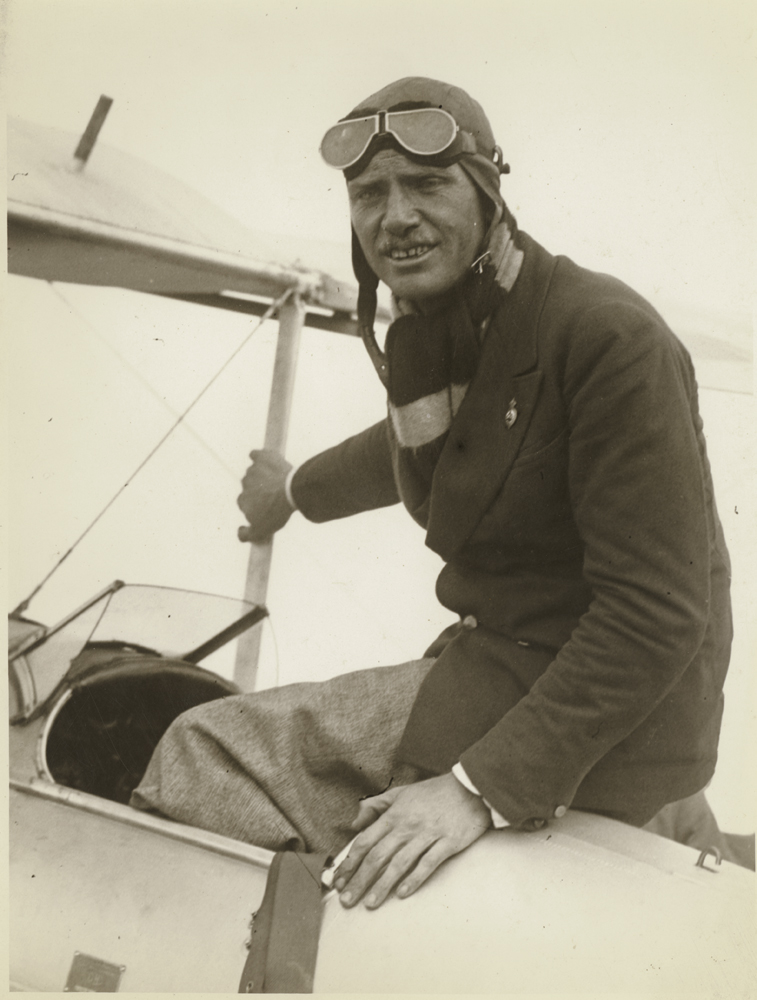
Grosvenor House
MacRobertson Centenary Air Race 1934 Winner: Speed
Scott and Campbell-Black were feted in Melbourne and later in Sydney, where they were given a civic reception at the Town Hall. There they were introduced to Australia's first licensed aviator, William Hart, who remarked that most of his flights have been at less than 50km/h, unlike the Comets 381km/h! At the same time, their winning DeHavilland Comet was displayed in Martin Place, Sydney, before Scott and Campbell-Black returned to London by ship from Adelaide.
Grosvenor House
MacRobertson Centenary Air Race 1934 Winner: Speed
Scott and Campbell-Black were feted in Melbourne and later in Sydney, where they were given a civic reception at the Town Hall. There they were introduced to Australia's first licensed aviator, William Hart, who remarked that most of his flights have been at less than 50km/h, unlike the Comets 381km/h! At the same time, their winning DeHavilland Comet was displayed in Martin Place, Sydney, before Scott and Campbell-Black returned to London by ship from Adelaide.
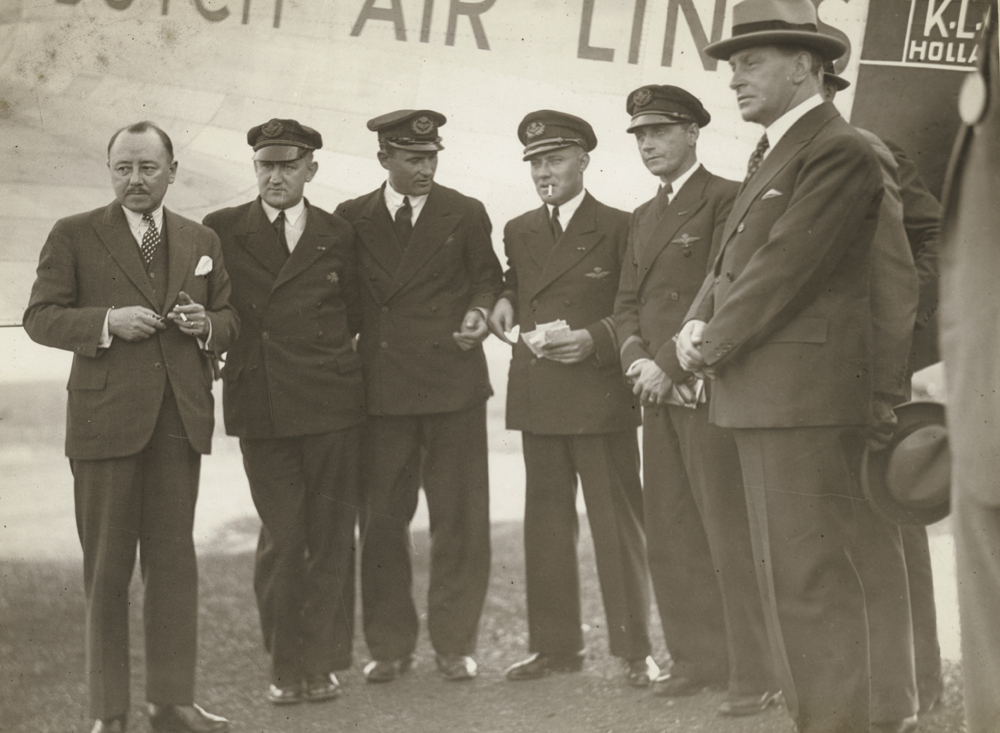
Uiver
MacRobertson Centenary Air Race 1934 Winner: Handicap
Winner of the handicap section and second fastest in the 1934 air race was a Douglas DC2, Uiver [Stork], crewed by D. Parmentier, J.J. Moll, B. Prins and C. Van Brugge of KLM, the Royal Dutch Airline. European DC2s were assembled by Fokker in the Netherlands.
Uiver
MacRobertson Centenary Air Race 1934 Winner: Handicap
Winner of the handicap section and second fastest in the 1934 air race was a Douglas DC2, Uiver [Stork], crewed by D. Parmentier, J.J. Moll, B. Prins and C. Van Brugge of KLM, the Royal Dutch Airline. European DC2s were assembled by Fokker in the Netherlands.
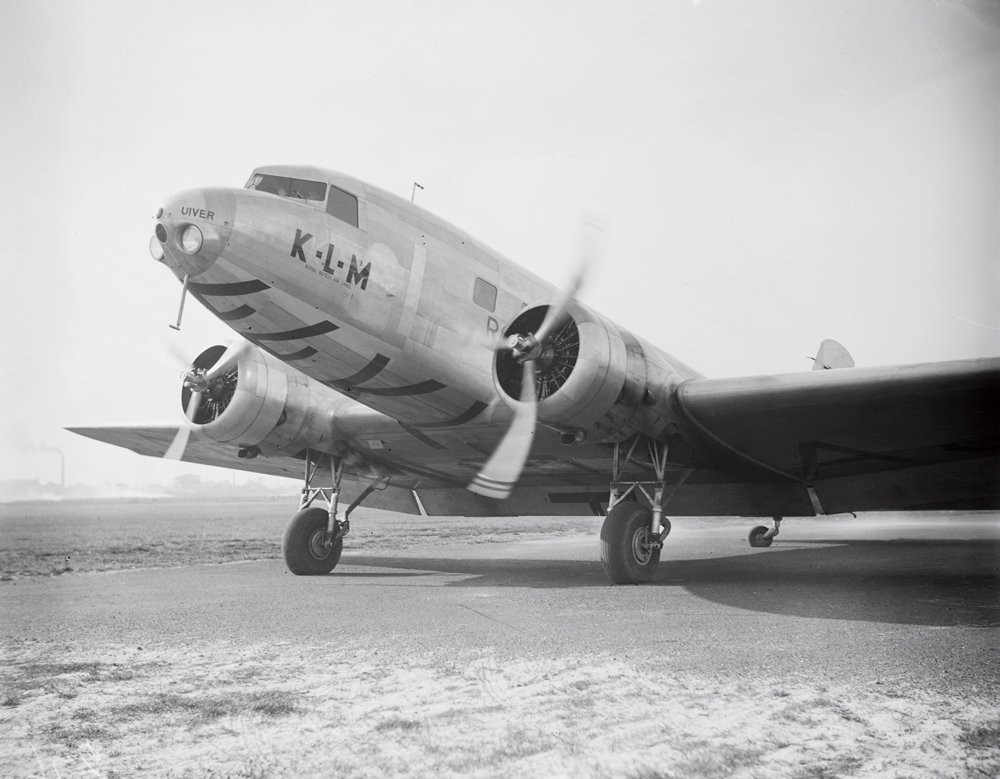
Uiver
MacRobertson Centenary Air Race 1934 Winner: Handicap
The Douglas DC2 Uiver entered by KLM showed that passenger air travel could be comfortable, safe, and reliable. Capable of carrying 14 passengers, the Uiver carried four crew, three passengers and a cargo of mail in the MacRobertson Air Race. The Uiver was in the air for 81 hours 10 minutes and in a total journey time of 90 hour 13 minutes.
Uiver
MacRobertson Centenary Air Race 1934 Winner: Handicap
The Douglas DC2 Uiver entered by KLM showed that passenger air travel could be comfortable, safe, and reliable. Capable of carrying 14 passengers, the Uiver carried four crew, three passengers and a cargo of mail in the MacRobertson Air Race. The Uiver was in the air for 81 hours 10 minutes and in a total journey time of 90 hour 13 minutes.
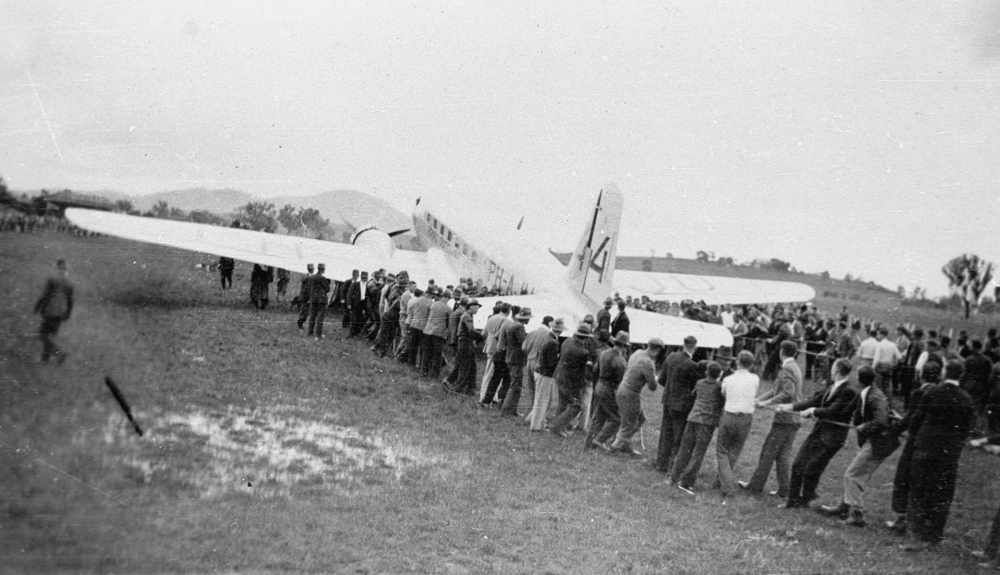
Uiver
MacRobertson Centenary Air Race 1934 Winner: Handicap
Lost in an electrical storm at night, the crew of the Uiver circled the town of Albury, trying to contact someone. The engineer at the power station flashed the towns lights to spell out its name in morse code and the local radio station appealed for volunteers to illuminate the local race track with their car headlights. Parmentier saw the improvised runway and landed in heavy rain. The Uiver bogged in the sodden ground, but in the morning the townsfolk dragged the plane out with ropes. Leaving the passengers, fellow crew members and mail in Albury, Parmentier and Moll flew on to Melbourne.
Uiver
MacRobertson Centenary Air Race 1934 Winner: Handicap
Lost in an electrical storm at night, the crew of the Uiver circled the town of Albury, trying to contact someone. The engineer at the power station flashed the towns lights to spell out its name in morse code and the local radio station appealed for volunteers to illuminate the local race track with their car headlights. Parmentier saw the improvised runway and landed in heavy rain. The Uiver bogged in the sodden ground, but in the morning the townsfolk dragged the plane out with ropes. Leaving the passengers, fellow crew members and mail in Albury, Parmentier and Moll flew on to Melbourne.
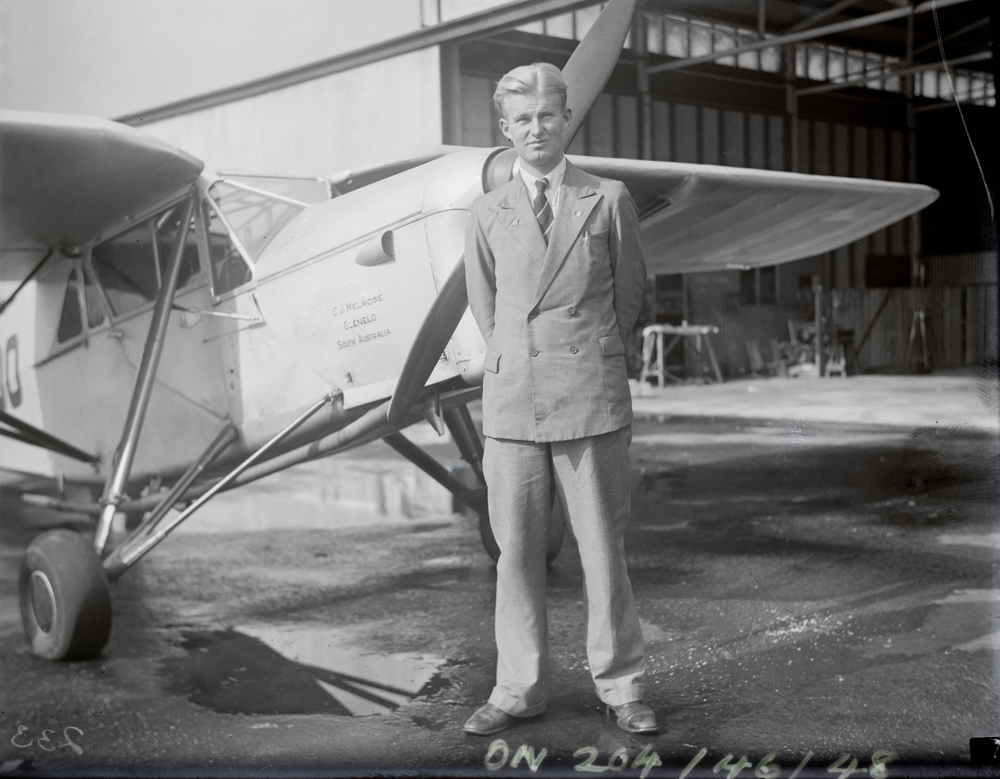
My Hildegarde
MacRobertson Centenary Air Race 1934: The only Australian competitor to finish
The only Australian to complete the Air Race was C. J. (Jimmy) Melrose, a twenty year old from Glenelg, South Australia. Melrose flew a DH 80A Puss Moth named My Hildegarde (after his mother, who had bought the plane) and arrived in Melbourne after 120 hours flying time to claim second place in the handicap division. His landing in Darwin was a heart-stopping feat with an empty fuel tank.
My Hildegarde
MacRobertson Centenary Air Race 1934: The only Australian competitor to finish
The only Australian to complete the Air Race was C. J. (Jimmy) Melrose, a twenty year old from Glenelg, South Australia. Melrose flew a DH 80A Puss Moth named My Hildegarde (after his mother, who had bought the plane) and arrived in Melbourne after 120 hours flying time to claim second place in the handicap division. His landing in Darwin was a heart-stopping feat with an empty fuel tank.
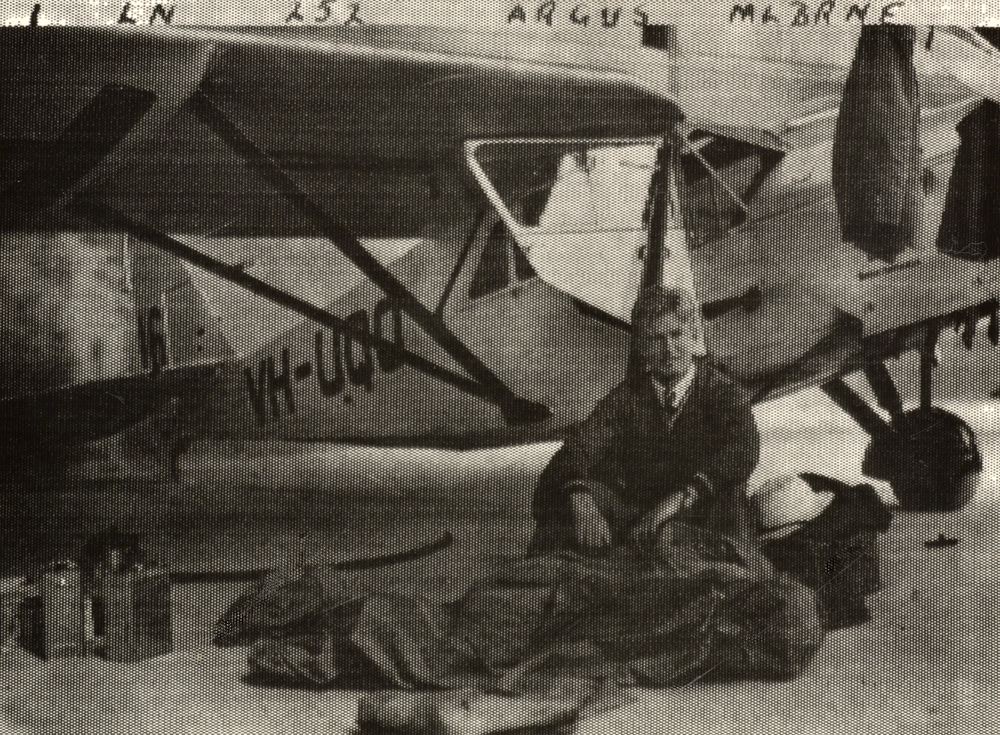
My Hildegarde
MacRobertson Centenary Air Race 1934: The only Australian competitor to finish
This image of Jimmy Melrose is the first picture transmitted from England to Australia by short-wave radio, on 17 October 1934 using the Amalgamated Wireless (Australasia) Limited radio-picturegram service. Because of the distance involved and the problems of radio interference with conventional signals, it was tramittted as on/off signals, or digitally. The original photograph in London was scanned optically on a rotating cylinder and the reflected light converted to radio signal. It was reconstituted in Melbourne by the reverse procedure. This photograph, showing Melrose about to load up his plane, arrived in Australia in minutes; his flight took 10 days.
My Hildegarde
MacRobertson Centenary Air Race 1934: The only Australian competitor to finish
This image of Jimmy Melrose is the first picture transmitted from England to Australia by short-wave radio, on 17 October 1934 using the Amalgamated Wireless (Australasia) Limited radio-picturegram service. Because of the distance involved and the problems of radio interference with conventional signals, it was tramittted as on/off signals, or digitally. The original photograph in London was scanned optically on a rotating cylinder and the reflected light converted to radio signal. It was reconstituted in Melbourne by the reverse procedure. This photograph, showing Melrose about to load up his plane, arrived in Australia in minutes; his flight took 10 days.
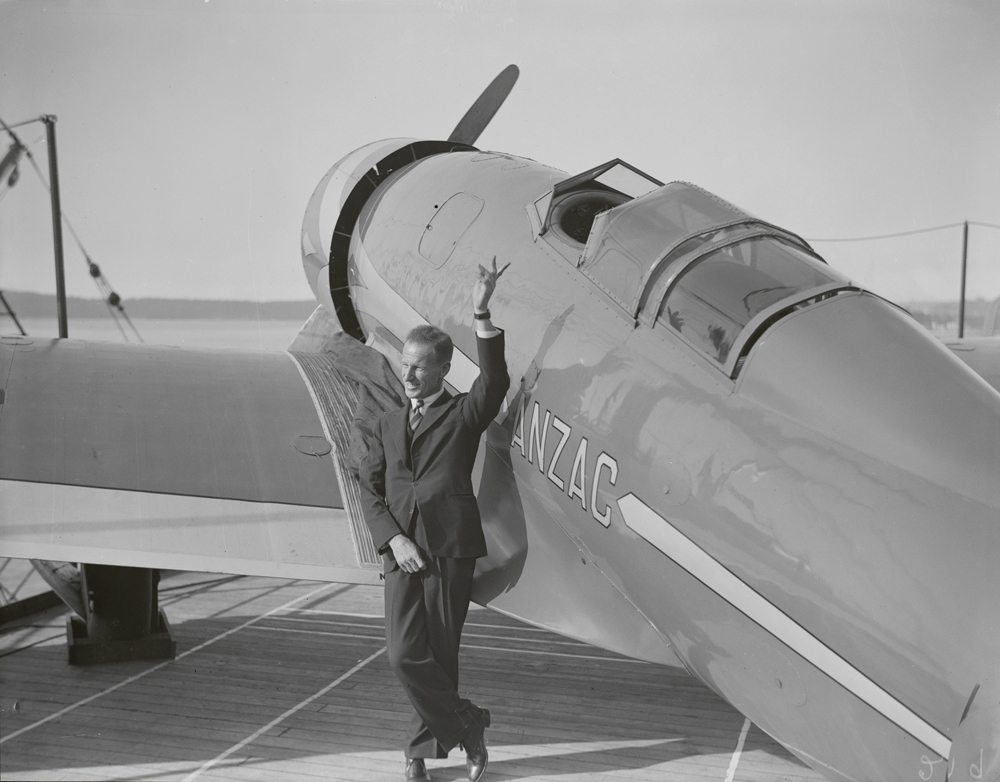
ANZAC
MacRobertson Centenary Air Race 1934: Kingsford Smith's entry
Charles Kingsford Smith's entry in the 1934 race was a second-hand Lockheed Altair aircraft. Here he reveals the monoplane and its name on board ship in Sydney Harbour on 16 July 1934. However, he was prevented from bringing it ashore, because ANZAC was a protected name. In the end, Kingsford Smith did not race, as he ran out of time to register the newly names Lady Southern Cross and reach the start.
ANZAC
MacRobertson Centenary Air Race 1934: Kingsford Smith's entry
Charles Kingsford Smith's entry in the 1934 race was a second-hand Lockheed Altair aircraft. Here he reveals the monoplane and its name on board ship in Sydney Harbour on 16 July 1934. However, he was prevented from bringing it ashore, because ANZAC was a protected name. In the end, Kingsford Smith did not race, as he ran out of time to register the newly names Lady Southern Cross and reach the start.
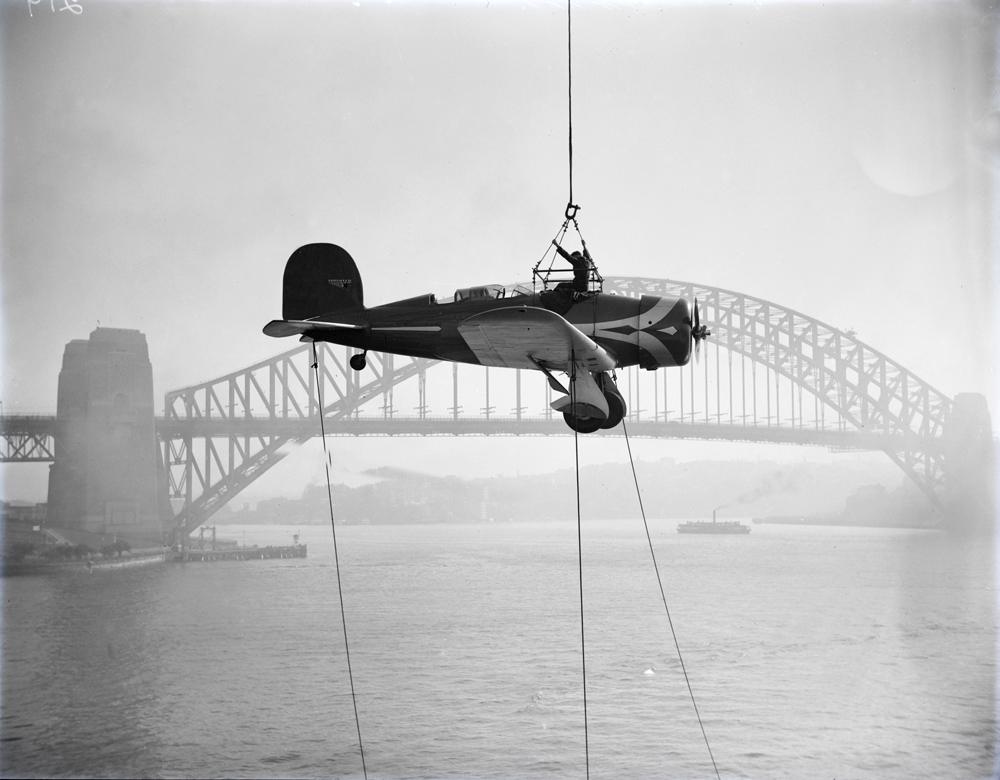
ANZAC
MacRobertson Centenary Air Race 1934: Kingsford Smith's entry
Charles Kingsford Smith's Lockheed Altair, with its offending name papered over, was lifted off the S.S. Mariposa by the crane Titan and taken by barge to Anderson Park, Neutral Bay. There it was fuelled and flown by Kingsford Smith and P.G. Taylor to Mascot, where it re-appeared as Lady Southern Cross. It was in this plane that Kingsford Smith and Tommy Pethybridge disappered over the Bay of Bengal in November 1935, during another attempt to break the England to Australia record.
ANZAC
MacRobertson Centenary Air Race 1934: Kingsford Smith's entry
Charles Kingsford Smith's Lockheed Altair, with its offending name papered over, was lifted off the S.S. Mariposa by the crane Titan and taken by barge to Anderson Park, Neutral Bay. There it was fuelled and flown by Kingsford Smith and P.G. Taylor to Mascot, where it re-appeared as Lady Southern Cross. It was in this plane that Kingsford Smith and Tommy Pethybridge disappered over the Bay of Bengal in November 1935, during another attempt to break the England to Australia record.
































